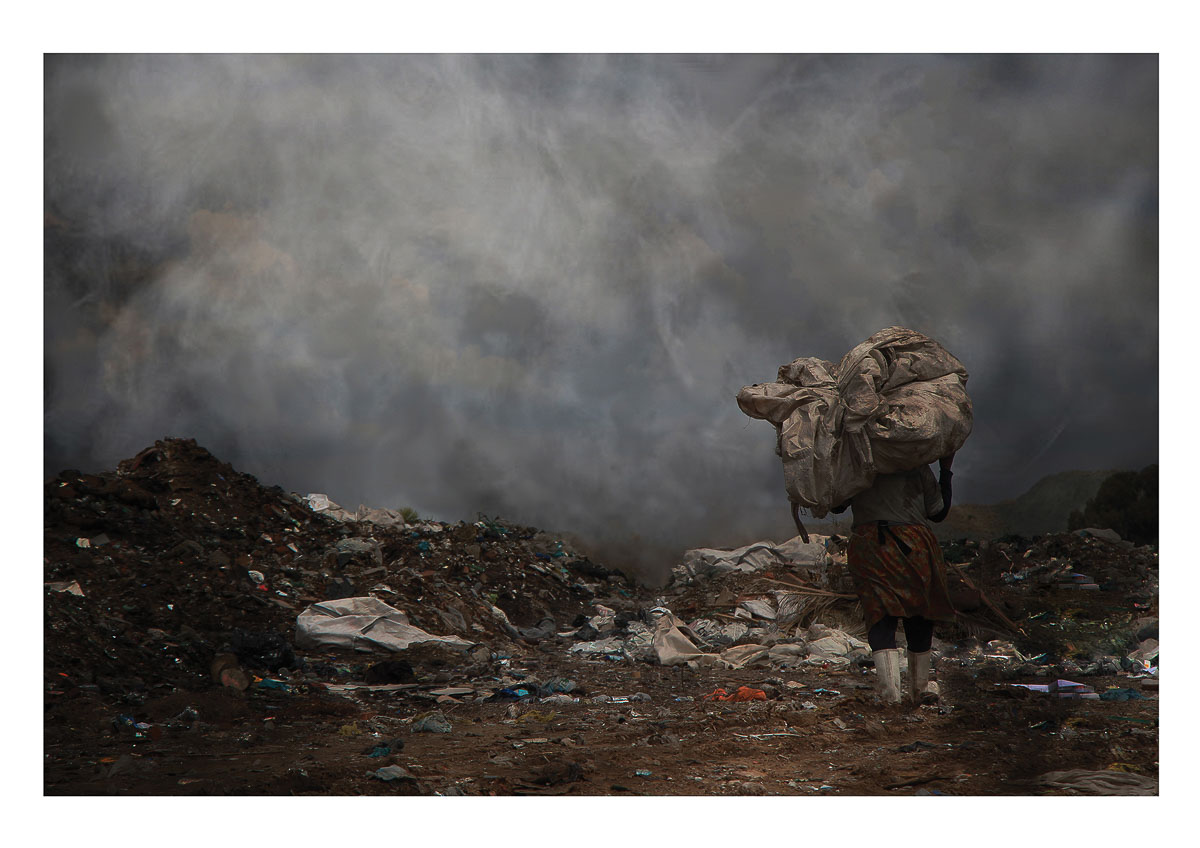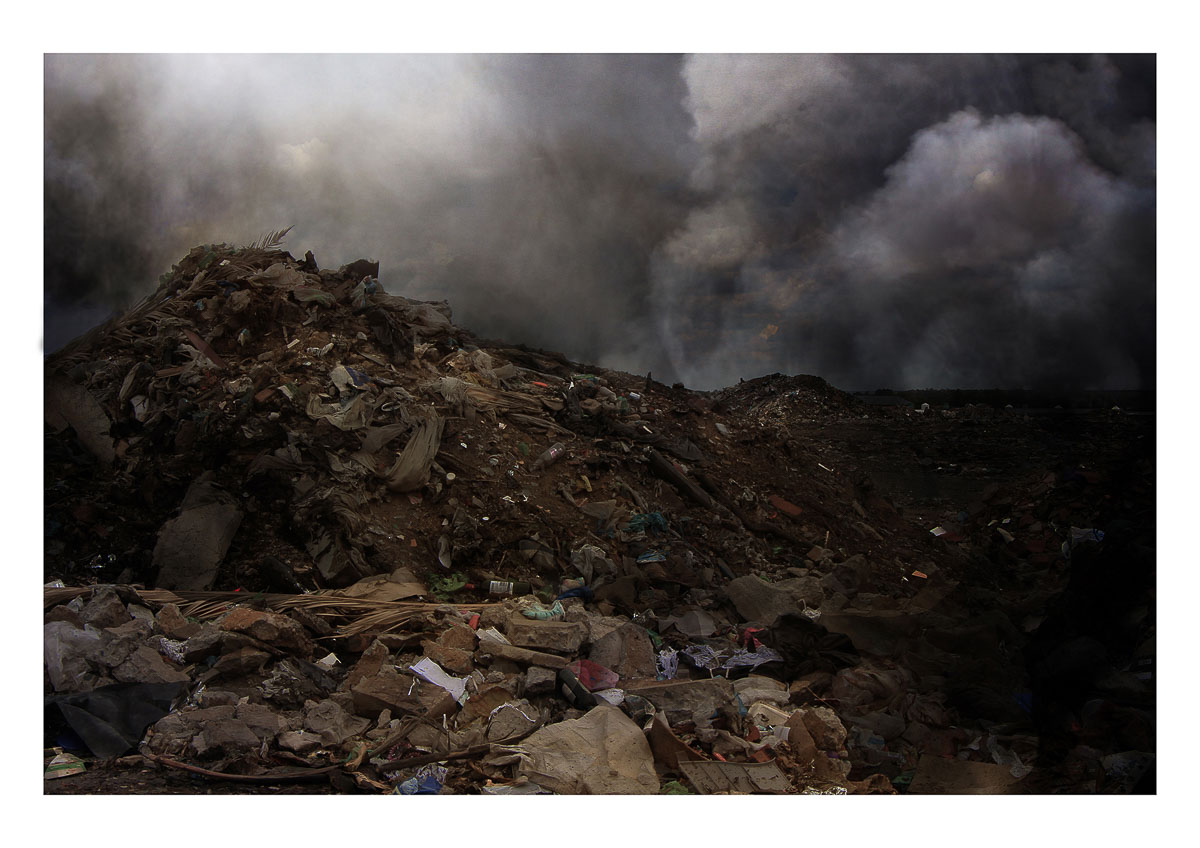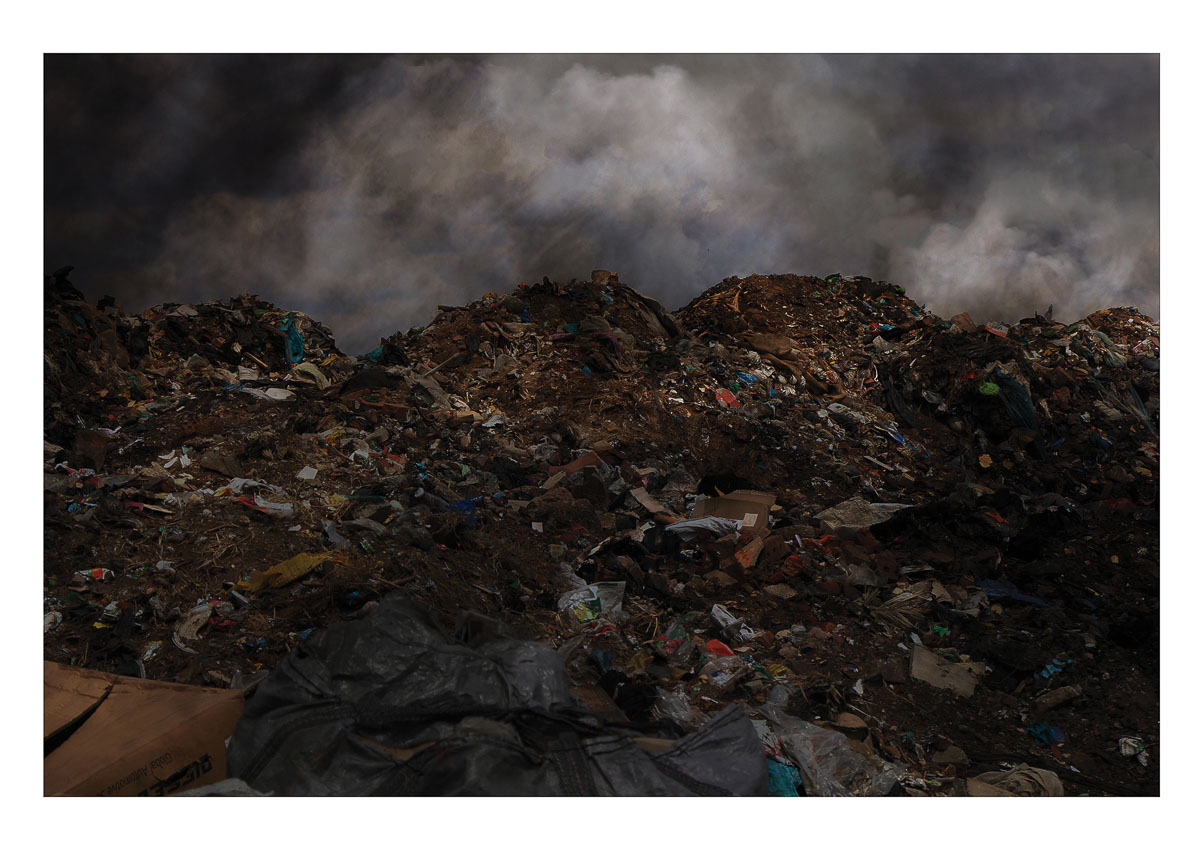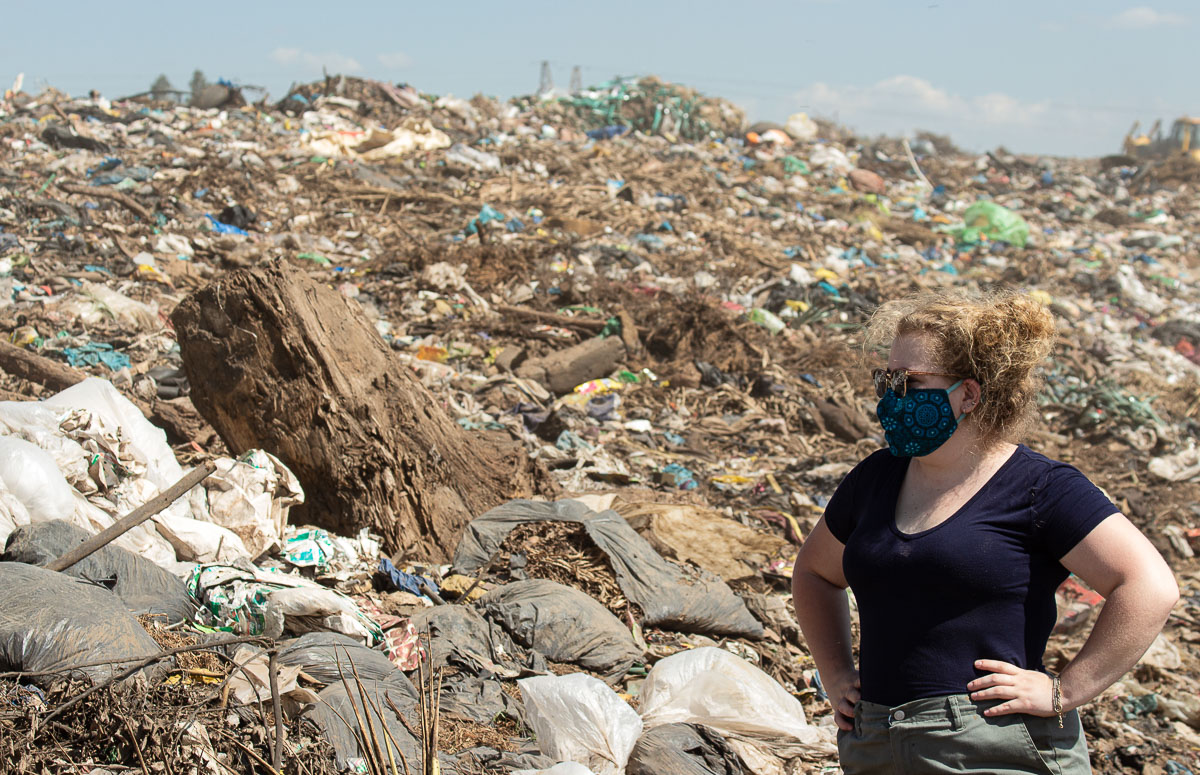For the StateoftheART Gallery Award 2021, we asked artists to find ways to engage with the reality of climate crisis and its impact on their own community; to create work to inspire and encourage societal change. The 10 finalists were chosen from more than 600 submissions from across South Africa, with the judges scoring the artists on the creativity, originality, and technical skill of their entries to this year's Award theme ‘On The Brink, Visualising Climate Change’.
The work of the shortlisted artists will go on show in a special exhibition at StateoftheART’s Cape Town gallery from 16 - 30 October 2021, and the winner announced at the Award Ceremony on 16 October 2021. The winner will receive a R40 000 cash prize and a solo exhibition with the gallery in 2022.
We asked the top ten Gallery Award Finalists some questions to help you get to know them before the Finalists Exhibition in October.
Learn more about the StateoftheART Gallery Award here>>
 "Haar Brood en Botter" by Rozelle Greyling. Digital print on Illford Smooth Cotton Rag (310gms) paper, 59.4 x 42 cm
"Haar Brood en Botter" by Rozelle Greyling. Digital print on Illford Smooth Cotton Rag (310gms) paper, 59.4 x 42 cm
Rozelle Greyling:Rozelle Greyling is a South-African born, final year BA Fine Arts student at the Department of Visual Arts, University of Pretoria. Greyling is passionate about environmental wellbeing, our perception and awareness of waste and our relationship with environmental harm and sustainability. Her artistic practice and theoretical research are focused on using the aesthetic appeal of beauty, colour and form to create a poetic and poignant message around, consumption, waste, value and the everyday concern with discarded things and materials, that has been a recurring and increasingly foregrounded theme within contemporary art since the beginning of the 20th century.
1. Tell us about yourself. Where are you from, and where do you currently live?Hello! My name is Rozelle Greyling, I was born and raised in Odendaalsrus a small town in the Freestate and am currently a final year BA Fine Arts student at the Department of Visual Arts at the University of Pretoria, specializing in Photography.
2. How did you learn about the Award and what made you want to enter?
As part of the University of Pretoria’s marketing strategy, students that form part of the Visual Arts programme are informed of possible exhibition opportunities and competitions. My initial reluctance regarding the competition was based on a lack of knowledge at the time, however after doing extensive research and studying the competition brief, I became increasingly intrigued, particularly since my own work is relevant to the theme, and something I am deeply passionate about.
3. Tell us about where you make your work.
As a photographer dealing with prevalent issues in my community such as illegal waste disposal and the improper management of municipal landfills, I often find myself on the periphery of society, knee-deep in waste. After having captured the images, I will spend the next few hours/days in front of my computer trying to bring to light the harsh reality of our unmeasurable consumption, as well as its deeper, often intangible health and ecological effects.
4. What is your key inspiration as an artist?
Artistically, my inspiration stems from my personal experiences, investigations, knowledge gained through engaging with the most adversely affected people in the small towns and rural communities near illegal dumping sites and municipal landfills and capturing their humanistic stories. Through this process, I am able to express my own understanding of waste and consumption to create visual representations that reveal both the damaging effects of consumerism, and the polluted landscapes constantly negotiated by local communities, to aspire to create awareness and give agency to those affected. A part of what inspires me the most, is being able to give voice to those who are voiceless.
5. Do you have any rituals or habits involving your art-making that you can tell us about?
As my work deals with the social, political, and environmental issues of waste and pollution in my hometown and its surrounding communities, a vital part of my art-making process is returning to these contaminated sites and showing the final artwork to the communities and individuals who were photographed, and explaining its intent and importance. In doing so, I believe this is essential in educating community members who may be working on and living on these uninhabitable wastelands often exposing themselves to contaminants such as air, water, and ground pollution as well as physical hazards such as unstable terrain. By using this method of interaction, I have built close personal relationships with many members of the community who share my desire to advocate for change.

"The Fall Of Icarus" by Rozelle Greyling. Digital print on Illford Smooth Cotton Rag (310gms) paper, 59.4 x 42 cm
6. How does your work convey the threat that climate change poses to our planet and country?
Seeing and experiencing the devastating effects of pollution, and post-consumer waste on South Africa's land, and people, first-hand, leaves me feeling unsettled and concerned for the future. In South Africa, overconsumption, greed, urbanization, and human development threaten the land and our future. With South African landfills accounting for 3% of the total anthropocentric greenhouse gas emissions globally (Bogner et al 2007), and the amount of carbon dioxide in the atmosphere hitting the highest level in human history in June 2019 (McNulty 2019) we need to take action. Since contaminated landscapes are hidden, specifically from those of privilege, my work aims to alleviate the visual liminality inherent to consumerism and post-consumer waste, to educate viewers and demonstrate the importance of becoming waste conscious and to advocate for change as this has now become an issue that affects our collective future. My work essentially serves as a rallying cry for our country and its people: an invitation to set aside our differences and prioritize the sustainability of our planet for future generations. The air we breathe. The ground we stand on. Towards a better future.
7. How is your work relevant in a South African context?
Today, global climate change is one of the greatest environmental challenges facing mankind. In 2004, South Africa was the 12th largest emitter of greenhouse-gas emissions, releasing 387 million metric tonnes of carbon dioxide equivalents, which represented 1.6% of global emissions (RSA National Treasury 2010). South-Africa’s waste sector accounts for 2% of South African greenhouse gas emissions (Greenhouse Gas Inventory 2009) with CH4 (Methane) emissions, one of the largest contributors to global warming accounting for 18% of anthropocentric CH4 (Methane) emissions globally. (Bogner et al 2007). Since there is inadequate published research available on current emissions, these numbers would have changed exponentially as emissions increased and temperatures rose, but they nonetheless express the enormity of the problem within a South African context. In this regard, my artistic practice is relevant as it deals with post-consumer waste, consumption, and pollution in the waste sector as key contributors to the climate crisis within South Africa, which poses an irreversible threat to the environment and society as a whole.

"No Man's Land" by Rozelle Greyling. Digital print on Illford Smooth Cotton Rag (310gms) paper, 59.4 x 42 cm
8. What do you think is the most urgent action required to tackle climate change in South Africa?
The biggest challenge we face in South Africa is our disregard, complacency, and ignorance of the underlying causes of climate change. As a result, I believe the greatest action one can take in addressing climate change is to raise public awareness of its root causes and the resulting social and environmental consequences. Taking this step will enable us to take action toward implementing the required changes, but the first step in protecting the environment and its people - as with anything in life - is understanding. It is only through a deeply rooted, personal understanding that we will be able to alter our habits and ways of living, to secure a better future.
9. Which South African artists, organisations or environmental activists do you find inspirational at the moment and why?
My inspiration is largely drawn from the work of environmental activist Mariette Liefferink and photographer Ilan Godfrey. Although their work is situated within the context of the mining industry’s consequences on South-Africa’s land and people, it provides a narrative and exposes the extent of neglect by successive governments and corporate bodies, that promotes environmental change and social justice. Their work provides those affected with the opportunity to be heard and the magnitude of social and environmental damage to be known. As an artist this is something I strive for in my own work, to visually portray our plight, issues of greed, consumption, environmental degradation, and our need to stand together as a nation for a future built on a foundation of equality and balance.
10. How do you feel about the upcoming group exhibition and the other shortlisted finalists’ works?
I am honoured to have been selected as one of the top ten finalists, and to be a part of such an inspiring exhibition and group of artists that deal with one of the greatest challenges of our time. Each and every shortlisted artist deserves their respective place and recognition. Their work inspires change and creates a dialogue around issues that are often left overlooked and unaddressed. As a student, and fellow creative, it is a privilege to have my work displayed alongside these talented individuals.
11. What do you think of the StateoftheART Gallery Award as a platform for emerging artists in South Africa?
Apart from giving us a platform to showcase and promote our work, increase accessibility, and reach a wider audience, the StateoftheART Gallery Award provides us as emerging artists with the opportunity to have our voices heard, especially in light of an important topic such as climate change. Through the award, we have the opportunity to increase our presence in the South African creative community and to connect with like-minded artists.
12. If you win the Gallery Award, tell us about what you have in mind for your solo exhibition in 2022?
With humanity's advancement comes an increased use of land, energy, and natural resources. As consumption increases our environmental consciousness decreases, resulting in an obscuring of nature and an increasing separation from it. Rather than seeing nature as a sublime/pristine object to be admired and protected, it becomes a resource to be exploited. If I win the StateoftheART Gallery Award, I wish to further utilize documentary imagery to explore the relationship between humans, nature, and industry, and to put into context the consequences of the excessive production of waste caused by technological advances and human development, which is sourced by marginalized communities from hazardous environments as a means of survival. Although the exhibition will relate directly to my submitted work, it will also give viewers an opportunity to gain a deeper understanding of these individuals’ untold stories. Their lives and livelihoods, as well as how people's perception of waste and resources is different depending on their socioeconomic status.

Rozelle Greyling.
13. Finally, tell us something surprising about yourself.
Throughout my studies in Fine Arts, I found the fields of modern and contemporary art, cultural traditions, and art history fascinating. As a result, I have developed an interest in various topics, such as the relationship between the museum as institution and the publics they serve, the epistemologies and genealogies they produce, and those points at which heritage intersects with broader discussions around culture, identity, and history. I therefore plan on doing my Masters degree in Heritage Museum and Preservation studies at the University of Pretoria in the near future.

